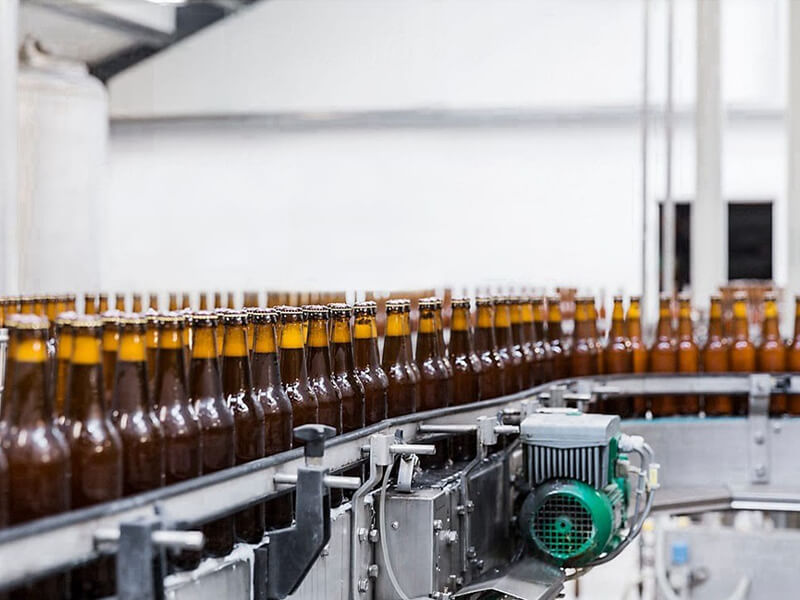
We know that beer contains saturated dissolved CO2 gas, which is produced during fermentation, or added to beer by artificially charging CO2. The solubility of beer to CO2 varies with beer temperature and pressure. Below we use the formula to illustrate:
For example: when the beer temperature is 5°C and the CO2 partial pressure is 2 bar, the saturated solubility of CO2 in beer is 5 g/L.
From Equation 1, we can see that the solubility of CO2 in beer is proportional to the partial pressure of CO2. When the pressure of the back-pressure gas in the liquid storage tank is lower than the saturated solubility of CO2, CO2 will escape from the beer, resulting in the phenomenon of beer filling effect such as alcohol spillage and insufficient filling. Therefore, the filling pressure should be higher than the saturated dissolution pressure of CO2, and at the same time, it should be lower than the pressure of the incoming wine, so as to avoid affecting the speed of entering the wine.
Beer is transported from the sake tank to the filling machine through a pipeline. Most breweries use the back pressure in the sake tank. Because there is a long pipeline from the sake tank to the filling machine, the pressure is often unstable when the beer reaches the filling machine. The fluctuation is relatively large. The liquid level in the liquid storage tank also causes a large fluctuation. This causes the escape of CO2 in the beer and affects the filling effect of the beer. It is generally required that the wine pressure is 3bar, and the pressure fluctuation value should be less than 0.3bar. We can increase the wine delivery pump on the pipeline. Adopt frequency conversion control technology to ensure the stability of the wine delivery pressure.
The 4-20mA continuous control signal output by the PID regulator controls the frequency converter, and then the frequency converter controls the speed of the wine pump, so as to achieve the purpose of supplying wine with constant pressure.
During the filling process, the pressure of the bottle holder cylinder cannot be ignored. If the pressure is too low, the bottle will not be pressed tightly, resulting in poor sealing, which is likely to cause wine leakage and foaming, and the wine is not full. The pressure of the bottle holder has a certain relationship with the wine filling pressure. Generally, when the wine filling pressure is 2-4bar, the pressure of the bottle holder is 2.5-3bar.
It can also be seen from formula 1 that the solubility of CO2 is inversely proportional to the temperature of the beer. Excessive wine temperature will cause the escape of CO2, which reduces the content of CO2 in the beer and is prone to the phenomenon of booze. Therefore, the wine temperature should be strictly controlled at 0-4 ℃.